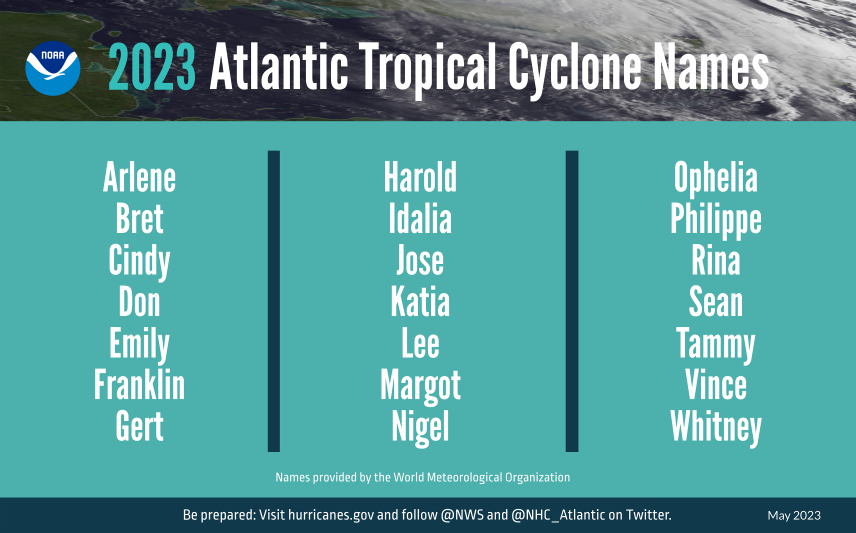The National Oceanic and Atmospheric Administration (NOAA) has released its projections for the 2023 Atlantic hurricane season, spanning from June 1 to November 30. According to their forecast, there is a 40% probability of a near-normal season, while an above-normal season and below-normal season both have a 30% likelihood. NOAA’s predictions anticipate a total of 12 to 17 named storms during this period, with wind speeds of 39 mph or higher.
Welcome to our comprehensive guide on how to prepare for a hurricane. Hurricanes are powerful and destructive natural disasters that can cause significant damage to life and property. Being well-prepared is crucial to ensure your safety and that of your loved ones during such an event. In this guide, we will provide you with essential tips and detailed steps to help you effectively prepare for a hurricane and minimize its impact on your life and property.
Understanding Hurricanes
Before we delve into the preparations, it’s essential to understand what a hurricane is and how it forms. Hurricanes are tropical cyclones that originate over warm ocean waters and are characterized by strong winds and heavy rainfall. They go through various stages of development, from a tropical disturbance to a tropical storm and eventually a hurricane.
Tracking and Forecasting
Tracking and forecasting hurricanes are integral parts of preparedness. Stay informed by monitoring weather reports and updates from official sources such as the National Hurricane Center. Familiarize yourself with the terminology used in weather forecasts, such as hurricane watches and warnings.
Creating an Emergency Plan
Having a well-thought-out emergency plan can make a significant difference during a hurricane. Involve all members of your household in the planning process. Determine evacuation routes, establish a meeting point, and designate responsibilities for each family member. Practice the plan through drills so that everyone knows what to do when a hurricane strikes.
Building a Hurricane Kit
Prepare a comprehensive hurricane kit that includes essential supplies to sustain you and your family during and after the storm. Your kit should contain:
1. Non-perishable Food Items
Stock up on canned goods, dried fruits, nuts, energy bars, and other non-perishable food items that don’t require cooking. Remember to include a manual can opener.
2. Water
Store at least one gallon of water per person per day for at least three days. Hydration is crucial during and after a hurricane.
3. Medications and First-Aid Supplies
Ensure you have a sufficient supply of prescription medications for each family member, along with a well-equipped first-aid kit.
4. Important Documents
Keep important documents, such as identification papers, insurance policies, medical records, and property deeds, in a waterproof and portable container.
5. Battery-powered Devices
Have battery-powered flashlights, lanterns, and a portable radio to stay connected and informed.
6. Personal Hygiene Items
Pack hygiene items like hand sanitizers, wet wipes, tissues, and personal toiletries.
7. Cash
Keep some cash on hand, as electronic payment methods may not be available during power outages.
8. Clothing and Bedding
Pack extra clothing, blankets, and sleeping bags to stay warm and comfortable.

IMAGE Hurricane Outlook May 2023 Names 052422 NOAA
Securing Your Home
Properly securing your home is essential to minimize damage during a hurricane. Follow these steps:
1. Reinforce Windows and Doors
Install storm shutters or board up windows and doors with plywood to protect against flying debris.
2. Clear the Surroundings
Remove any loose objects from your yard, such as patio furniture, potted plants, and toys, which could become projectiles in high winds.
3. Trim Trees and Shrubs
Trim branches and shrubs around your property to reduce the risk of falling limbs.
4. Anchor Outdoor Structures
Secure outdoor structures like sheds and pergolas to the ground to prevent them from being blown away.
Evacuation Preparedness
If authorities issue an evacuation order, it is crucial to act promptly and follow their instructions. Here are some important tips for evacuation preparedness:
1. Know Your Evacuation Routes
Be familiar with the designated evacuation routes in your area and plan how you will reach them.
2. Pack Essentials Quickly
Keep your hurricane kit, important documents, and valuables in an easily accessible location, so you can grab them quickly if you need to evacuate.
3. Inform Others of Your Plans
Let friends or family outside the evacuation zone know about your plans and destination.
During the Hurricane
When the hurricane makes landfall, safety should be your utmost priority. Stay indoors and away from windows and exterior walls. Listen to local authorities for updates and instructions.
After the Hurricane
Once the storm has passed, exercise caution when going outside. Be aware of downed power lines, flooding, and other hazards. If you evacuated, wait for authorities to give the all-clear before returning home.
Ending Notes
In conclusion, preparing for a hurricane is not an option; it’s a necessity. By understanding hurricanes, creating an emergency plan, building a hurricane kit, securing your home, and knowing what to do during and after the storm, you can significantly increase your safety and resilience during these natural disasters.
Remember, being well-prepared can make all the difference. Stay informed, be proactive, and take the necessary steps to safeguard yourself and your loved ones. By following the comprehensive tips provided in this guide, you can be better equipped to face the challenges that a hurricane may bring.









